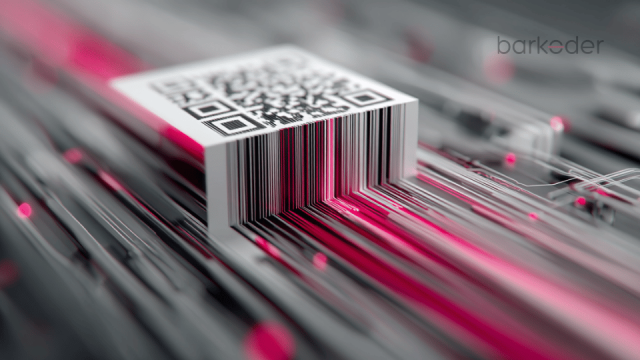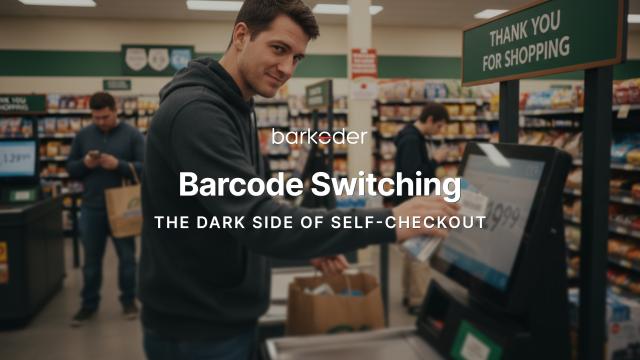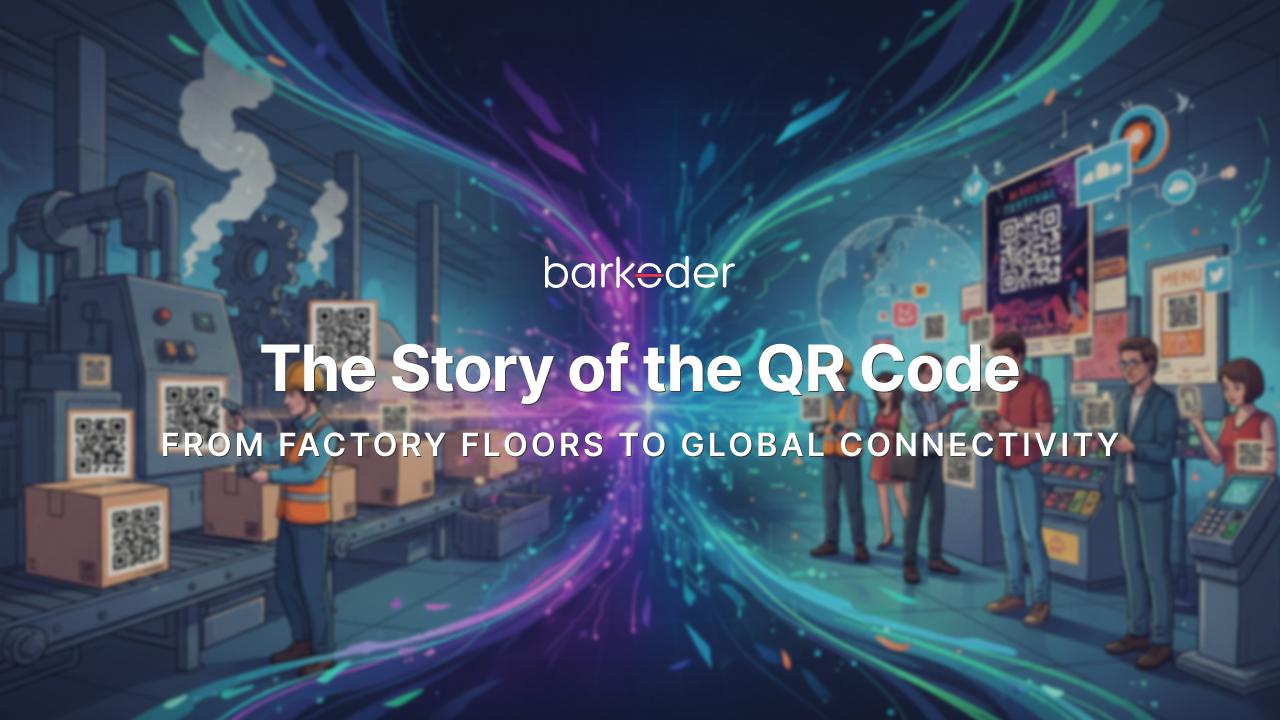
The Story of the QR Code: From Factory Floors to Global Connectivity
In 1994, Japanese engineer Masahiro Hara changed the world in a way few could have predicted — not with a smartphone or social network, but with a small black-and-white square. Working at Denso Wave, a subsidiary of Toyota, Hara set out to solve a problem on the company’s production line. The existing 1D barcodes used for tracking auto parts could only store limited information and required precise alignment to be read. Factories needed something faster, smarter, and more efficient.
The solution? The Quick Response code — or QR code — a compact, two-dimensional barcode capable of storing over 100 times more data than traditional barcodes, readable from any angle, and resilient enough to withstand damage or dirt.
But what truly set it apart wasn’t just its clever engineering. It was the decision to make it open and royalty-free. Instead of patenting it for profit, Hara and Denso Wave released the technology to the public, allowing anyone to use it — freely. That single act of generosity transformed the QR code into one of the most widely adopted technologies on Earth.
The Birth of a Smarter Code
While the QR code looks simple, its design is a masterpiece of functional minimalism.
Each code is made up of a pattern of black and white modules arranged on a square grid. Unlike traditional linear barcodes, the information is stored in two dimensions — horizontally and vertically — allowing far greater data capacity and built-in error correction. This made it ideal for a variety of applications beyond the factory floor.
Key innovations included:
Position markers: The three distinctive large squares in the corners help scanners detect and orient the code from any angle.
Error correction: Even if up to 30% of the code is damaged, scanners can still read it accurately.
High capacity: A single QR code can hold over 7,000 digits or 4,000 characters, far surpassing the limitations of 1D barcodes.
Speed: True to its name, it could be scanned almost instantly — a “quick response” to the inefficiencies of its predecessors.
Originally, QR codes were designed for inventory management in the automotive industry, helping track parts efficiently on production lines. However, as mobile devices gained cameras and computing power, the potential of QR codes grew exponentially. Suddenly, what was once an industrial tool became a bridge between the physical and digital worlds.
By the early 2000s, QR codes began appearing in retail, advertising, and packaging, allowing consumers to instantly access product information, websites, and promotions with a simple scan. Their reliability, speed, and versatility made them a perfect tool for connecting objects to digital content, without the need for specialized equipment.
Over time, industries began experimenting with creative uses of QR codes:
Healthcare: Patient identification, vaccination records, and lab test tracking.
Education: Quick access to online resources, assignments, and interactive learning materials.
Tourism: Interactive maps, cultural information, and museum guides.
Marketing & e-commerce: Direct links to websites, coupons, and promotional campaigns.
Retail: Instant price checks and digital loyalty programs.
Transportation: Digital boarding passes and tickets.
Payments: Mobile wallets like Alipay, WeChat Pay, and PayPal standardized QR payments globally.
The QR code’s design also inspired large-scale applications — from massive QR art in fields to augmented reality experiences, demonstrating that even a simple black-and-white square can become a canvas for innovation and engagement.
Its combination of simplicity, durability, and adaptability ensures that the QR code remains relevant, even decades after its invention, proving that well-designed technology can evolve far beyond its original purpose.
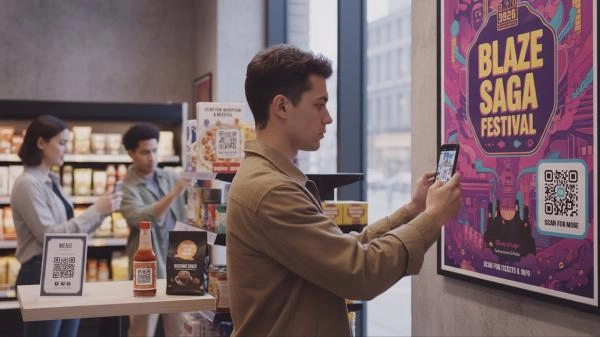
Pre-COVID QR Code Adoption and Usage Trends
Before the COVID-19 pandemic, QR codes were already gradually becoming part of daily life, though their adoption varied widely across regions and industries. Initially invented in 1994 by Masahiro Hara for the automotive industry, QR codes were primarily used for inventory management and tracking components. Their ability to store more information than traditional barcodes, combined with high-speed scanning and error correction, made them ideal for industrial applications.
But what truly set the QR code apart wasn’t just its clever engineering — it was the philosophy behind it. Masahiro Hara and his team at Denso Wave made a remarkable choice that few inventors make: they decided not to patent the technology for profit. Instead, they released it as an open, royalty-free standard, inviting the world to use, adapt, and build upon it without restrictions.
This decision fundamentally shaped the QR code’s destiny. Without licensing barriers, companies across industries — from manufacturing and logistics to marketing and mobile development — could implement the technology freely. As a result, adoption spread organically and rapidly, creating a shared digital language that transcended brands, borders, and platforms.
That single act of generosity turned what could have been a niche industrial tool into one of the most universally adopted technologies on Earth. It embodied a rare blend of innovation and openness — a reminder that sometimes, the most powerful breakthroughs are those given freely to the world.
Even today, that spirit of accessibility continues to influence how we think about open standards, interoperability, and inclusive design. The QR code didn’t just connect data — it connected people, industries, and ideas in ways its creators could never have imagined.
1. Global Adoption and Usage
Asia: China and Japan led the way. By 2016, QR code payments in China accounted for $1.65 trillion in transactions. In 2019, around 50% of QR code users scanned codes several times a week, reflecting widespread daily use. QR codes were embedded in retail promotions, mobile payment systems, and public services, making them an essential part of digital life. QR Tiger
United States: In 2019, roughly 47 million U.S. smartphone users scanned QR codes, with growth driven by retail, marketing, and payment applications. Brands like Nike, Calvin Klein, and Tommy Hilfiger began incorporating QR codes into campaigns, allowing consumers to access exclusive content and promotions. barkoder
Europe: QR code usage doubled between 2015 and 2018, with applications expanding in retail, museums, and cultural sites. For example, over 30% of galleries in Italy offered QR-based interactive content, and many were exploring further adoption for educational or marketing purposes. QR Tiger
2. Industry Applications
Retail: QR codes were used for window shopping experiences, product information, price checks, and loyalty programs. Retailers like Escape Boutique in the UK utilized QR codes for a convenient window shopping experience, allowing customers to scan codes to access product information and make purchases. QR Tiger
Fast-Moving Consumer Goods (FMCG): Smart packaging with QR codes enhanced consumer trust, allowing users to verify authenticity and access product details. In 2018, smart packaging solutions incorporating QR codes were offered by 11 companies, enhancing consumer trust and engagement. QR Tiger
Marketing & Advertising: Brands integrated QR codes into print media, billboards, and packaging to deliver promotions, exclusive content, and interactive campaigns.
Healthcare & Education: Early adoption included linking patients to lab results or vaccine information and providing students access to online learning materials.
3. Technological Integration
Smartphone Capabilities: With the release of iOS 11 in 2017, Apple enabled native support for QR code scanning through the iPhone camera, followed by Android's 8.0 Oreo update. This development significantly increased QR code usage as smartphones became more capable and accessible.
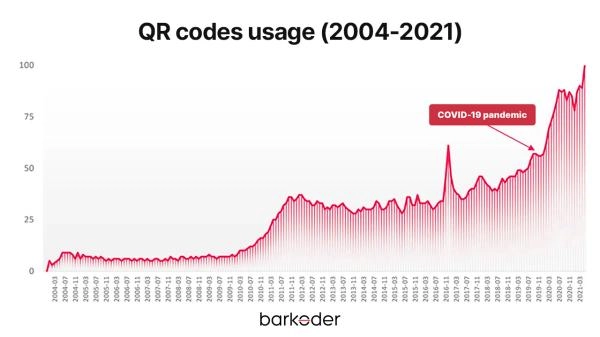
The Pandemic Era: A New Renaissance
When COVID-19 hit, QR codes found their second life. Suddenly, contactless interactions became essential. Restaurants, hotels, and public services rapidly adopted QR-based systems to replace physical menus, brochures, tickets, and paper forms. What was once a simple, industrial tool became a critical link between people and services.
The once-overlooked black-and-white square quickly became a symbol of safety, efficiency, and modern convenience. From scanning to check in, to ordering meals, to accessing health passes — QR codes became the universal interface for everyday interactions, bridging the gap between offline and online worlds.
It wasn’t a new invention anymore; it was a rediscovery of simplicity. What made the QR code so powerful during this time wasn’t just its ease of use — it was its ability to adapt to new needs quickly. Businesses could update digital menus instantly, healthcare providers could distribute information efficiently, and governments could streamline testing and vaccination verification — all without touching a single sheet of paper.
Beyond practicality, QR codes also sparked creative uses. Cafés started embedding QR codes into coffee art, tourist attractions linked codes to augmented reality experiences, and local shops used them to deliver interactive promotions. Even art and agriculture embraced the technology: from rice paddies forming giant QR codes to street murals with embedded scannable links, QR codes became a medium for innovation and engagement.
In essence, the pandemic didn’t just accelerate QR adoption; it transformed public perception. What was once a niche industrial tool became a visible, trusted, and indispensable part of daily life, proving that even the simplest technology can become revolutionary when society needs it most.
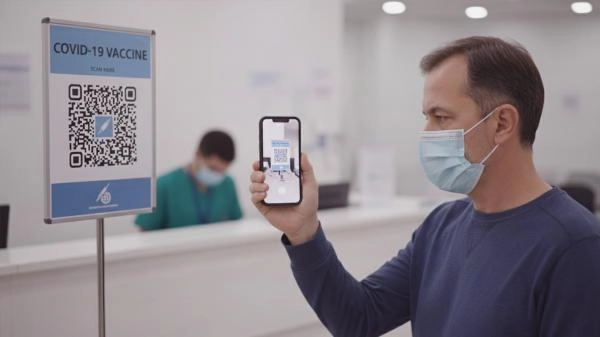
The Unsung Hero: Masahiro Hara’s Legacy
Despite creating a technology that reshaped industries, Masahiro Hara remained humble. He never sought to profit from his invention. Denso Wave continued to maintain the QR code standard, but anyone could use it freely, without paying licensing fees.
That decision democratized access to digital connectivity. Today, billions of people use QR codes daily — in retail, banking, healthcare, transportation, and hospitality — achieving a level of ubiquity few technologies reach. Its openness allowed developers, businesses, and governments worldwide to integrate QR codes in ways Hara may never have imagined, from mobile payments in Asia to contactless menus in Europe and North America.
Hara once said he was inspired by the “Go” board game, where black and white pieces form infinite patterns. That same elegant logic — simple elements combining to create complex structures — gave rise to a system that turned geometry into a language understood by machines and humans alike.
But the story goes beyond just technical ingenuity. The QR code embodies practicality, adaptability, and foresight. Its error-correction capability allows codes to remain readable even if partially damaged, a feature crucial in real-world applications where labels get scratched or dirty. Its two-dimensional design made it scalable and versatile, enabling applications on everything from tiny product packaging to massive rice-field QR art in China.
Moreover, QR codes reflect a broader cultural and technological philosophy: that technology should empower, not restrict. By making the QR code open and royalty-free, Hara fostered a global ecosystem of creativity and utility. Entrepreneurs, educators, artists, and governments alike could leverage the code to connect people, streamline processes, and share information instantly.
From tracking auto parts in Toyota factories to enabling billions of digital payments, healthcare check-ins, and interactive experiences, the QR code has become more than a tool — it’s a medium. It bridges physical and digital worlds, turning objects, spaces, and experiences into portals of information.
In essence, Masahiro Hara’s invention reminds us that simplicity, generosity, and clever engineering can create technologies that not only solve immediate problems but also reshape how society interacts with the world, decades after their creation.
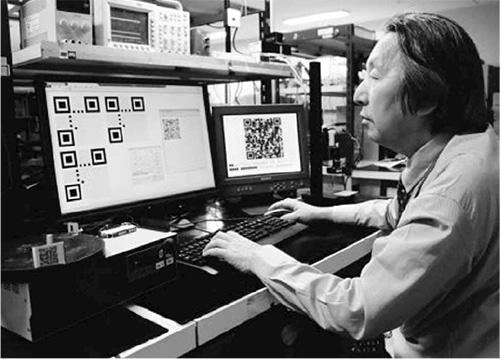
QR Codes in 2025: Smarter, Faster, Everywhere
Fast forward to today, and QR technology is evolving at an unprecedented pace. With tools like barKoder SDK, businesses and developers can integrate ultra-fast, on-device barcode and QR scanning directly into their apps, creating seamless and reliable experiences for users.
Modern SDKs now offer capabilities that were unimaginable just a decade ago:
Multi-code detection: Scan multiple barcode types simultaneously — including QR codes, Data Matrix, and traditional 1D barcodes — even under challenging conditions such as low light, glare, or motion.
Offline functionality: Scanning no longer relies on internet access, making it perfect for warehouses, retail floors, and field operations where connectivity may be limited.
Advanced integrations: Modern SDKs support augmented reality overlays, interactive interfaces, and real-time analytics, enabling businesses to enhance user engagement and gain actionable insights.
Custom branding: From UI overlays to scan feedback animations, companies can maintain brand consistency, making scanning feel like a native part of their app experience.
Cross-industry applications: Hospitality, logistics, retail, healthcare, and entertainment can all leverage advanced scanning to streamline workflows, improve customer experience, and reduce friction.
What began as a static printed code has transformed into a living bridge between the physical and digital worlds — smarter, faster, and more integrated than ever. Beyond just scanning products or menus, modern QR code solutions are now tools for interactive marketing, inventory management, digital authentication, and immersive experiences.
With barKoder SDK, developers can:
Build custom scanning workflows tailored to specific industries.
Integrate real-time error handling, ensuring codes are read accurately even in imperfect conditions.
Enable data-driven insights, tracking user interactions and optimizing processes.
Support next-gen features, including AR-driven campaigns, gamified scanning, and secure transactions.
And today there's one step further - now an AI-driven barcode SDK can capture even QR Codes that miss all of their basic elements and even have massive damages to its matrix code - via barKoder's MatrixSight®.
In essence, the humble QR code has evolved from a factory-floor utility into a dynamic digital interface, connecting businesses, consumers, and technology in ways that continue to expand. As scanning technology grows more sophisticated, QR codes are no longer just functional — they are a gateway to richer experiences, smarter operations, and real-world innovation.
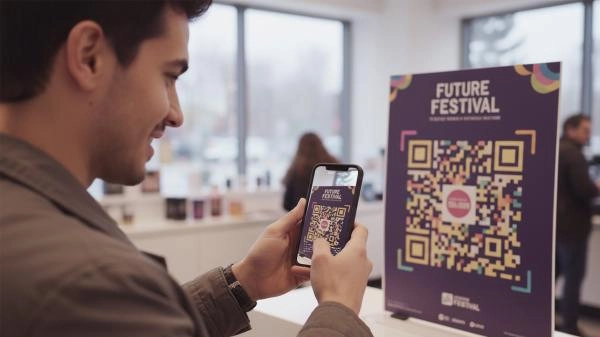
More Than Just a Code
The QR code’s journey is about more than data storage — it’s a story of accessibility, innovation, and generosity. It’s proof that when technology is shared freely, it grows beyond its original purpose and becomes an integral part of daily human life.
From rice paddies designed as giant QR codes in rural China to contactless restaurant menus powered by barKoder, the humble black-and-white square continues to connect people, cultures, and ideas — one scan at a time. It has become a universal interface, capable of linking the physical world with the digital realm, transforming how we shop, learn, travel, and socialize.
The QR code also highlights the power of simplicity. Unlike complex apps or platforms that require constant updates and infrastructure, a QR code works on virtually any device with a camera, making it accessible globally. It has lowered barriers to information, enabling small businesses, farmers, educators, and non-profits to reach audiences instantly without significant costs.
Moreover, its evolution continues. QR codes are now being integrated with augmented reality, blockchain, and analytics, enabling richer, interactive experiences. For example, modern SDKs like barKoder allow developers to embed scanning capabilities directly into apps, with ultra-fast detection, offline functionality, and real-time feedback, turning static codes into dynamic tools for engagement and commerce.
The story of the QR code is also a reminder of how technology can empower communities. It has bridged gaps between urban and rural, digital and physical, consumers and creators. From marketing campaigns to educational resources, and from healthcare access to eco-tourism initiatives, QR codes continue to transform the way information is shared and experienced worldwide.
In the end, the QR code is more than a pattern of squares — it’s a symbol of connection, creativity, and shared innovation. As scanning technology evolves and new applications emerge, the impact of this simple invention will only expand further, proving that even the smallest ideas can reshape how humanity interacts with the world.
In a world obsessed with innovation, the QR code remains a rare reminder that the most powerful technologies are often the simplest — and that true impact sometimes comes not from ownership, but from openness.





